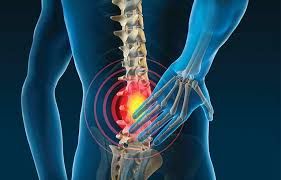A professor of orthopaedic and trauma surgery, Mike Ogirima, has cautioned against improper lifting techniques and poor posture, warning that they could contribute to chronic back pain and spinal injuries.
The orthopaedic surgeon explained that individuals engaged in physically demanding jobs, such as laborers and artisans, face a higher risk of back problems due to repetitive bending and heavy lifting.
Ogirima, a former President of the Nigerian Medical Association, noted that excessive strain on the back accelerates wear and tear, potentially leading to persistent discomfort and mobility issues.
“Frequent bending, improper lifting, and repetitive movements without proper posture place excessive stress on the spine,” he said.
He highlighted that human porters carrying heavy loads, construction workers, and individuals who engage in strenuous activities without proper back support are particularly vulnerable.
“The abuse of the back includes improper lifting techniques and poor sitting habits. Many people slouch forward or recline too far back while sitting, which strains the spine over time,” Ogirima explained.
He advised that individuals working long hours in a seated position should take breaks every two hours to stretch and move around, as prolonged sitting can exacerbate back pain.
“The more you engage in physically demanding activities like heavy lifting without proper technique, the more you accelerate the wear and tear on your spine,” he warned.
Regarding lifestyle adjustments for individuals experiencing back pain, Ogirima recommended avoiding excessive strain and maintaining a healthy weight.
“Some causes of back pain are linked to aging and being overweight. While we cannot prevent aging, we can reduce strain on the back by avoiding unnecessary stress and maintaining a healthy body weight,” he added.
He urged individuals with chronic back pain to seek medical attention for proper diagnosis and treatment.
Studies have shown a high prevalence of lower back pain among individuals engaged in physically demanding activities, such as manual labor and professional dancing.
A study titled ‘The Epidemiology of Low Back Pain and Injury in Dance: A Systematic Review’ published in the Journal of Orthopaedic & Sports Physical Therapy in March 2019, revealed that dancers are highly susceptible to musculoskeletal pain, with a significant percentage experiencing lower back injuries.
The research found that spinal issues such as spondylolysis—a condition caused by repetitive spinal flexion and extension—are more prevalent among ballet dancers compared to the general population.
Similarly, a study titled ‘The Prevalence and Impact of Low Back Pain in Pre-Professional and Professional Dancers: A Prospective Study’ published in the Journal of Physical Therapy in Sport in March 2018, indicated that dancers with a history of lower back pain are more likely to experience recurring issues.
The study emphasized the importance of access to healthcare professionals specializing in musculoskeletal disorders to help manage and prevent long-term back injuries.
Ogirima reiterated the importance of proper posture, adequate rest, and professional guidance to prevent severe spinal conditions.
